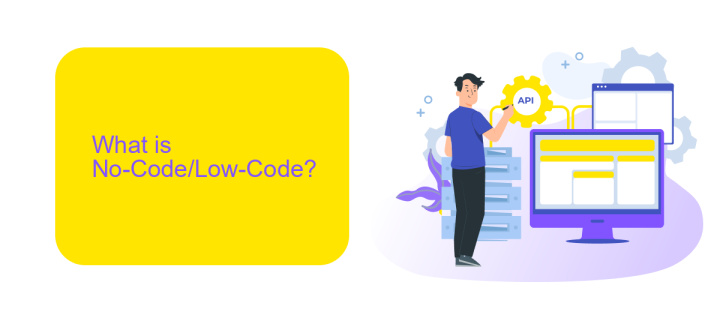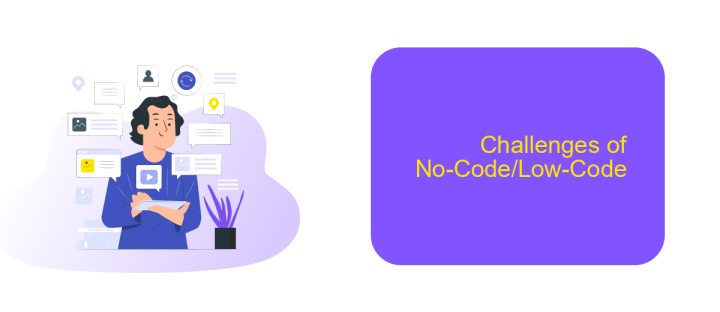No-Code Low-Code Meaning
In today's rapidly evolving tech landscape, the concepts of No-Code and Low-Code development have gained significant traction. These approaches empower individuals with little to no programming experience to create applications and automate processes. By simplifying the development process, No-Code and Low-Code platforms democratize technology, enabling businesses to innovate faster and more efficiently than ever before.
Introduction
No-Code and Low-Code platforms are revolutionizing the way businesses approach software development. By eliminating the need for extensive coding knowledge, these platforms empower a broader range of individuals to create applications, automate workflows, and optimize processes with ease.
- No-Code: Designed for users with no programming experience.
- Low-Code: Requires minimal coding skills, offering more flexibility.
- Increased Efficiency: Rapid development and deployment.
- Cost-Effective: Reduces the need for specialized developers.
Integrating various services and applications is a key feature of No-Code and Low-Code platforms. Tools like ApiX-Drive facilitate seamless integration, allowing users to connect different software systems without writing a single line of code. This not only enhances productivity but also ensures that all business operations are synchronized and efficient.
What is No-Code/Low-Code?

No-Code and Low-Code platforms are revolutionary tools that allow users to create applications without the need for extensive coding knowledge. No-Code platforms are designed for users with little to no programming skills, enabling them to build applications through visual interfaces and pre-built templates. This democratizes software development, making it accessible to a wider audience and allowing businesses to quickly develop solutions tailored to their needs.
Low-Code platforms, on the other hand, offer a more flexible approach by combining visual development tools with the ability to write custom code when necessary. This makes Low-Code platforms ideal for developers who want to accelerate the development process while still having the option to fine-tune their applications. Both No-Code and Low-Code platforms often include features for integrating various services and APIs. For instance, ApiX-Drive is a service that simplifies the process of connecting different applications and automating workflows, making it easier to integrate various tools within No-Code and Low-Code platforms.
Benefits of No-Code/Low-Code

No-code and low-code platforms offer numerous advantages to businesses and individuals by simplifying the development process. These platforms allow users to create applications without extensive coding knowledge, reducing the dependency on professional developers.
- Cost Efficiency: No-code/low-code platforms significantly lower development costs by eliminating the need for a large team of developers.
- Speed: Applications can be developed and deployed much faster, allowing businesses to respond quickly to market demands.
- Accessibility: These platforms democratize application development, enabling non-technical users to bring their ideas to life.
- Flexibility: Users can easily modify and update applications as business needs evolve.
- Integration: Tools like ApiX-Drive facilitate seamless integration with other services and applications, enhancing functionality.
By leveraging no-code/low-code platforms, organizations can accelerate innovation, reduce costs, and empower a broader range of employees to contribute to the development process. This approach not only enhances productivity but also fosters a culture of creativity and collaboration within the company.
Challenges of No-Code/Low-Code

No-code and low-code platforms offer significant benefits, but they also come with their own set of challenges. One of the primary issues is the limitation in customization. While these platforms provide a wide range of functionalities, they often lack the flexibility to cater to highly specific business needs.
Another challenge is the integration with existing systems. Many businesses rely on a complex web of software and databases, and integrating no-code/low-code solutions can be cumbersome. This is where services like ApiX-Drive come in handy, as they facilitate seamless integration across various platforms without requiring extensive coding knowledge.
- Limited customization options
- Integration complexities
- Scalability concerns
- Security risks
Additionally, there are concerns about scalability. As businesses grow, the limitations of no-code/low-code platforms may become more apparent, necessitating a move to more robust, custom-coded solutions. Security is another critical issue, as these platforms may not offer the same level of protection as traditional development environments.
- Automate the work of an online store or landing
- Empower through integration
- Don't spend money on programmers and integrators
- Save time by automating routine tasks
Conclusion
No-Code and Low-Code platforms have revolutionized the way businesses approach software development. By simplifying the development process, these platforms empower non-technical users to create and deploy applications swiftly, reducing the dependency on traditional coding expertise. This democratization of technology fosters innovation and accelerates digital transformation across various industries.
Moreover, the integration capabilities of No-Code and Low-Code platforms, such as those offered by ApiX-Drive, further enhance their utility. ApiX-Drive enables seamless integration of various services and applications, streamlining workflows and boosting productivity. As the demand for rapid and efficient application development continues to grow, the adoption of No-Code and Low-Code solutions is poised to expand, driving significant advancements in how organizations operate and compete in the digital age.
FAQ
What is No-Code/Low-Code?
Who can benefit from using No-Code/Low-Code platforms?
How do No-Code/Low-Code platforms improve efficiency?
Are No-Code/Low-Code platforms secure?
Can No-Code/Low-Code platforms integrate with existing systems?
Apix-Drive is a universal tool that will quickly streamline any workflow, freeing you from routine and possible financial losses. Try ApiX-Drive in action and see how useful it is for you personally. In the meantime, when you are setting up connections between systems, think about where you are investing your free time, because now you will have much more of it.


